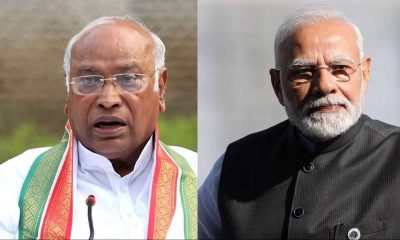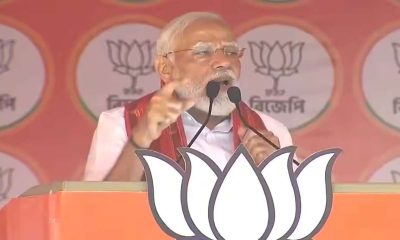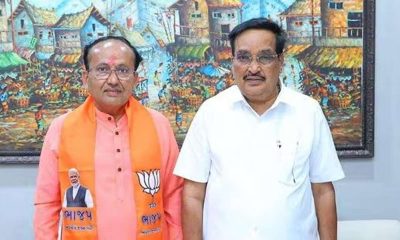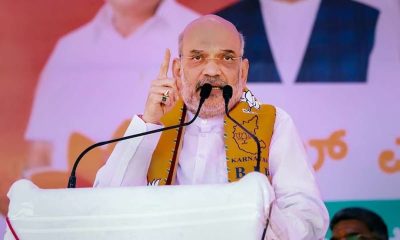India News
Hung assemblies in Nagaland and Meghalaya hold out hopes for a BJP on the upswing
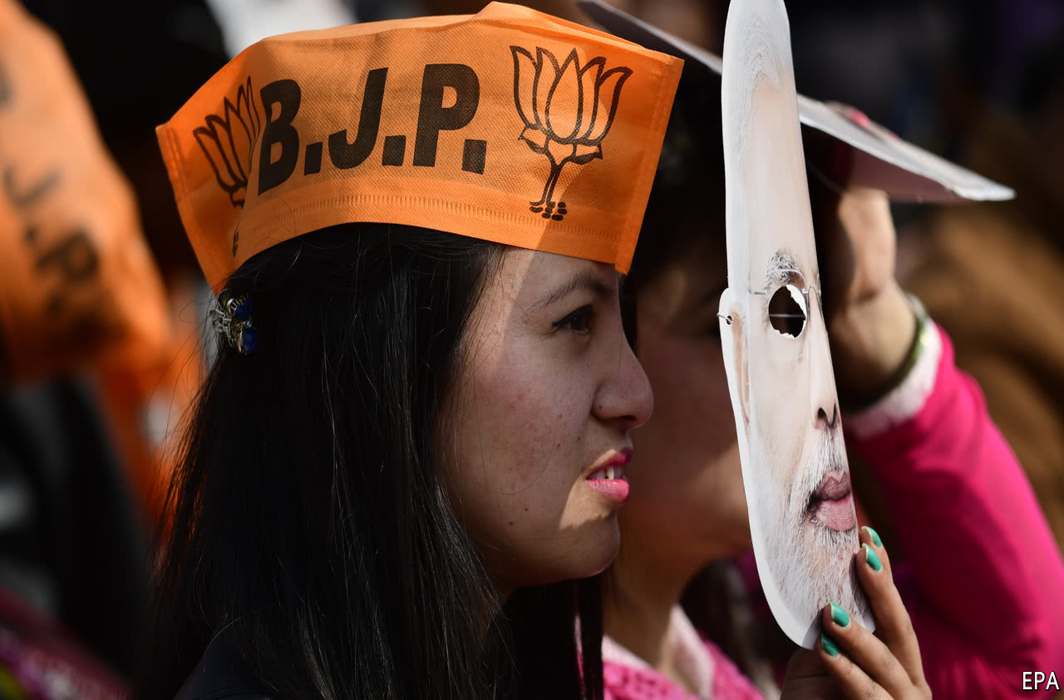
Having swept Tripura, the BJP had made significant gains in Nagaland and Meghalaya, the other two states where assembly elections were held last month (February). Although the BJP with its alliance partner was evenly balanced with its rival in Nagaland, a hung assembly in Meghalaya as well has offered it a chance to be a player in that state as well.
NAGALAND
The BJP- National Democratic Progressive Party (NDPP) alliance is looking at possibility of forming government in Nagaland. In the typically curious political scenario of the state, the outgoing ruling party Naga People’s Front (NPF) is also not averse to allying one again with BJP, though.
Senior BJP leader Ram Madhav had landed in Nagaland’s Dimapur, where he was holding meetings at the airport, according to media reports.
The NPF and NDPP appeared to be locked in a close battle for power in the 60-member Assembly. According to the Election Commission website at 6 pm, the NPF was ahead in 26 seats, the BJP in 11 and the NDPP in 15.
Ahead of this year’s elections, the BJP had parted ways with ally NPF choosing to partner with NPF leader and chief minister TR Zeliang’s arch rival and also his former party colleague Neiphiu Rio, who set up a new party in the NDPP. Neiphiu Rio was named the alliance’s chief ministerial candidate.
As results came in today, Zeliang offered to renew ties with BJP. “Election is election. Sometimes we get unexpected results. But we are confident we will get majority along with our allies. We are continuing our alliance (with the BJP), we have not parted at any point of time. I have two ministers in my cabinet from the BJP. Some leaders of the BJP are in touch with us. Don’t know if NDPP will come back.”
“We welcome the BJP if they want to be part of the government,” Zeliang added, claiming that his party is in touch with BJP north east strategists Himanta Biswa Sarma and Kiren Rijiju.
Neiphiu Rio dismissed Zeliang’s claims. “I find it amusing. The NPF had criticised the BJP over the issue of Naga traditions, etc. The BJP will have to decide who their real friends are,” he said.
The NPF concentrated on a regional identity in this election, presenting itself as champions of Nagas. It blamed Rio for creating a situation of instability in the state by forging alliances with the Centre. Meanwhile, the NDPP-BJP alliance tried to take on the role of opposition, calling Zeliang ‘a weak leader’, spearheading the campaign with the slogan “Change is Coming”.
The 2018 Nagaland Assembly elections also gave rise to a debate on the influence of BJP in a Christian-majority state, with the Nagaland Baptist Church Council taking a stance against the party.
The assembly elections held in Nagaland on February 27 witnessed a voter turnout of nearly 75 per cent, reflecting a plunge from the previous 90 per cent in the 2013 assembly elections. Polling was held in 59 of the 60 seats as former chief minister and National Democratic Progressive Party president Neiphiu Rio was elected unopposed from Northern Angami-II A/C after rival Naga People’s Front (NPF) candidate withdrew from the contest.
The NDPP, led by former chief minister Neiphiu Rio had contested 40 seats, while the BJP contested the other 20. Rio’s party is leading in 22 seats, while the BJP is ahead in eight, a gain of seven. The party had won only one seat in 2013.
NPF fielded candidates in 59 seats with the incumbent CM TR Zeliang leading the charge. The party enjoys the support of the National People’s Party (NPP) and the Janata Dal (United). Zeliang had earlier met Governor PB Acharya and submitted a letter of support from the two parties for forming the next government. The letter is crucial in case of a fractured mandate as according to an NPF leader “it was important to communicate to the Governor that NPF also has an alliance” when he decides who to invite first to form the government.
The NPF contested in alliance with NPP, which fielded as many as 25 candidates in its first ballot in the state. The JD(U), which chose to stay away from the alliance initially, fielded 13 candidates. The Aam Aadmi Party (AAP) has for the first time fielded three candidates this year.
The Congress has drawn a blank. The state party president Kewe Khape Therie hit out at CP Joshi for the “lost opportunity” to optimise the ground situation where the “Christian community were all out against the BJP and in favour of Congress ideologies and principles”. Therie alleged that Joshi, who has been the AICC general secretary-in-charge of the Northeast for two-and-a-half years, visited Nagaland only once, and also stopped Congress president Rahul Gandhi from visiting the state.
MEGHALAYA
In Meghalaya, the third north eastern state where elections were held in this round, a hung assembly means the BJP is in with a chance at forming government by tying up with regional parties.
The Congress in Meghalaya was leading in 21 seats, 10 short of the 31 seats needed to form a government.
The BJP, although with only two seats on its own, can stitch up a post-poll alliance together with the National People’s Party (NPP), an NDA ally that contested separately.
Congress is trying to avoid a Goa and Manipur kind of situation where it failed to form a government despite getting the most seats.
While the Congress has dispatched senior leaders Ahmed Patel and Kamal Nath to Shillong, the BJP, with a lead in only 2 states, has deputed Himanta Biswa Sarma to help cobble together an alliance government.
For the BJP, its negotiations will be aimed at establishing a non-Congress government with the help of regional allies like the NPP and the ‘Others’ – UDP, HSPDP and the GNC. In what is touted to be a ‘rare move’, the UDP, HSPDP, and the GNC stitched a pre-poll alliance, with the sole aim to rout the Congress from power.
The National People’s Party (NPP) has emerged as the second largest party with 19 seats. The third largest gainer in the state is surprisingly the category branded as ‘Others’, which consists of smaller regional parties like the United Democratic Party (UDP), Hill State People’s Democratic (HSPDP), the Garo National Council (GNC), the Khun Hynniewtrep National Awakening Movement (KHNAM), the People’s Democratic Front (PDF), and the Independents. Currently, this group is leading in close to 17 seats, in a 60-seat Assembly.
What united the three blocs – NPP, BJP and the ‘Others’ – is their aim to establish a non-Congress government. In comparison, the Congress’ only possible ally, the NCP has won only 1 seat, giving the anti-Congress faction a clear advantage.
Patricia Mukhim, editor of Shillong Times told news portal The Quint that the regional parties hold the baton to form the next government. “Regional parties across the country have always allied with the party in power at the Centre. So we could be looking at a BJP alliance led by the regional parties in Meghalaya,” she reportedly told The Quint, adding, however, that coalition governments in the state have always been unstable, with the smaller parties demanding ministerial berths.
The BJP in-charge for Meghalaya Nalin Kohi said that the vote was basically against the Congress and BJP leaders will now look to form a post-poll alliance with the regional parties to form government, according to media reports.
BJP leader and minister of state (home affairs) Kiren Rijiju said that the BJP, UDP and NPP will together form the government in Meghalaya.
NPP is an ally of the BJP at the Centre, Rajasthan and Manipur, but fought the elections in Meghalaya on its own.
Congress may like to try the remote chance of winning it over by wooing its leader Conrad Sangma, ambitious son of former Congress leader Purno Sangma.
The BJP is not likely to let him go, however. If NPP goes, BJP’s government in neighbouring Manipur would also be in trouble since it is dependent for its survival on four NPP MLAs of whom three are ministers.
2024 Lok Sabha Elections
Smriti Irani takes a swipe at Rahul Gandhi for calling Amethi his home but contesting Lok Sabha elections from Wayanad
Smriti Irani criticised the Rahul Gandhi for changing his families and said they have seen people changing colours, but for the first time changing families is being witnessed.
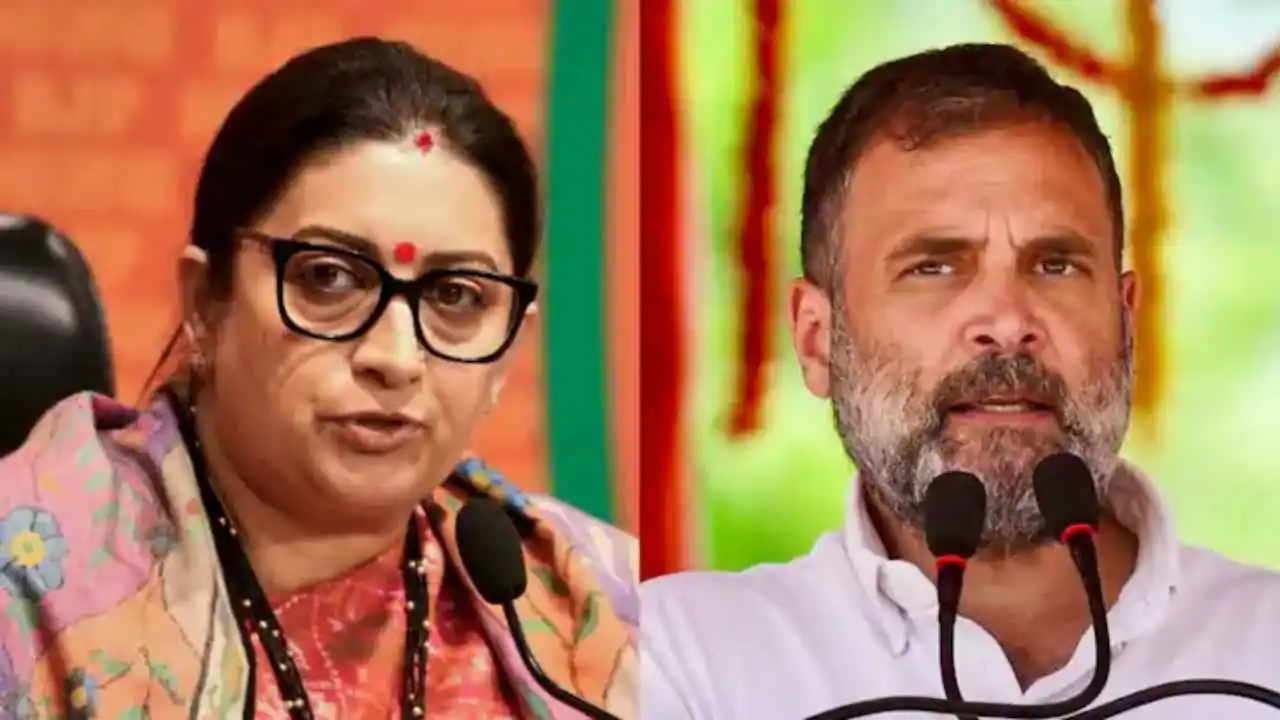
Union Minister Smriti Irani took a swipe at Rahul Gandhi on Saturday during a rally in Uttar Pradesh’s Amethi. While addressing the public rally, Irani said Rahul Gandhi spoke about his relations in Amethi and then he went to Wayanad where he declared the Kerala seat as his home as he filed for his nomination for the Lok Sabha elections.
Smriti Irani, who will be contesting her Amethi seat yet again, criticised the Rahul Gandhi for changing his families and said they have seen people changing colours, but for the first time changing families is being witnessed. The Union minister urged the people of Amethi to cast their votes on May 20, the day when Amethi goes for elections. She talked about the benefits of voting for BJP and said, the poor will get free ration for five years, farmers will get Rs 6,000 every month, and will get Rs 5 lakh every year under the Ayushman Bharat scheme.
Irani further added that Congress on the other hand has declared that it will calculate the wealth of the people if voted to power. She took a swipe over Congress candidates and said the grand old party is yet to announce its candidates for two key constituencies in Uttar Pradesh – Amethi and Raebareli, which have historically been the Congress’s stronghold. The BJP leader said that now that the polling in Wayanad has concluded, the Congress candidate will arrive in Amethi, but will first visit the Ram Temple.
She slammed Congress for rejecting the invitation to the Ram Temple Pran Pratishtha and said they rejected the invitation to the Ram temple Pran Pratishtha, now they will go to the Ram temple as they believe that this will get them votes in the ongoing Lok Sabha elections which means now they will go to the extent of betraying god as well.
2024 Lok Sabha Elections
Lok Sabha election 2024: Nearly 50% voter turnout recorded in second phase till 3 pm
The constituencies going to polls today include all 20 Lok Sabha seats in Kerala, 14 in Karnataka, 13 in Rajasthan, and others spread across different states.
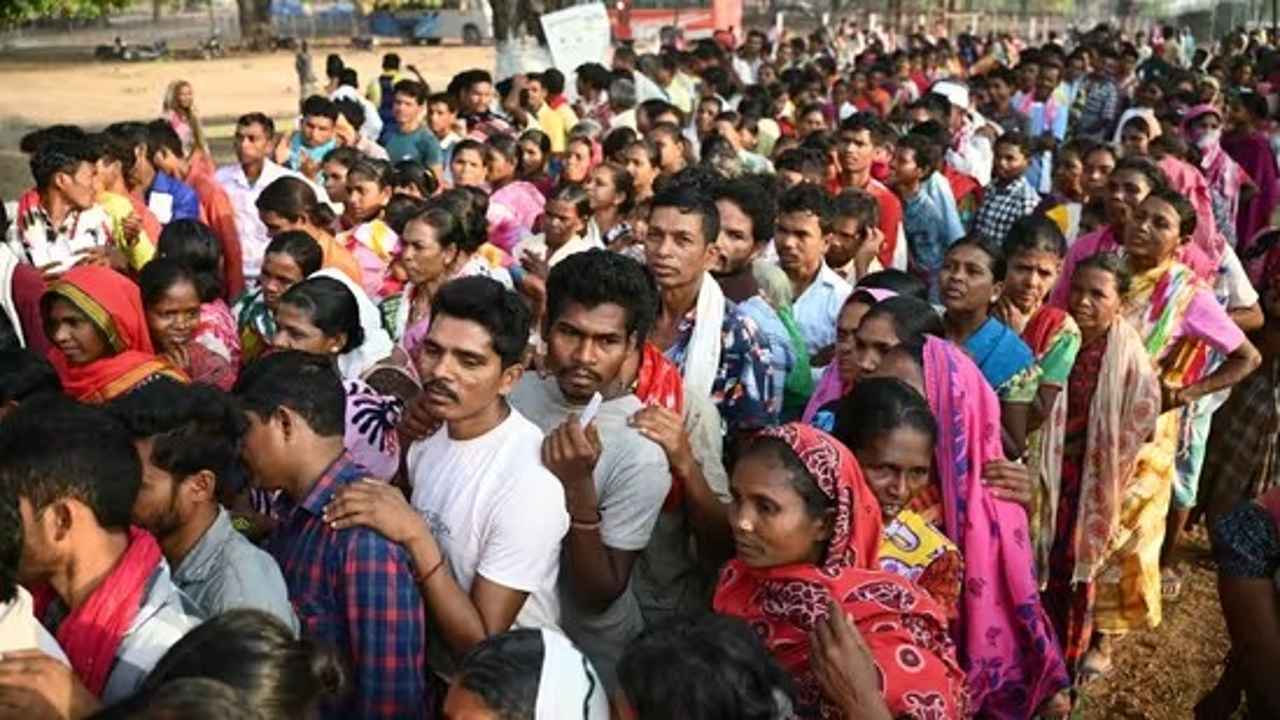
In the second phase of Lok Sabha elections 2024, over 50% of voters were registered in 13 states and the UTs till 3 p.m. 65% of voters participated in the first round of the Lok Sabha elections.
The 18th Lok Sabha elections are currently in their second phase, with voting for 88 seats taking place across 13 states and union territories. There are more than 1,200 people running for office, four of them are from outside Manipur.
Union minister Rajeev Chandrasekhar, BJP members Tejasvi Surya, Hema Malini, and Arun Govil, Rahul Gandhi and Congress leader Shashi Tharoor, DK Suresh, the brother of Karnataka Deputy Chief Minister DK Shivakumar, and former chief minister HD Kumaraswamy are among the notable contenders for the second phase.
In 2019, the NDA had won 56 of the 89 seats and the UPA 24. Six of these seats have been redrawn as part of the delimitation exercise.
The first phase of the seven stages of the elections took place on Friday, including 102 seats spread across 21 states and Union territories. Voter turnout was about 65.5% in the first phase, according to the reports.
In biggest festival of democracy, people from all walks of sector took part in it. A video went viral where former India captain and current Indian team head coach Rahul Dravid and former India player and head coach Anil Kumble were seen standing in line to cast their vote.
Meanwhile, voting started at 7 a.m. and will end at 6 p.m. The Election Commission has extended voting hours for those who are in line by an hour. According to Election Commission figures, the first two hours saw a 9.3% voter turnout throughout the 88 constituencies. By 9 am, Kerala had recorded 8.52%, Karnataka 9.21%, and Madhya Pradesh 13.82%.
In this phase, there were about 15.88 crore eligible voters, comprising 5.929 third-gender electors, 8.08 crore males, and 7.8 crore women. 3.28 crore young voters, aged 20 to 29, are among them; 34.8 lakh of them are first-time voters.
2024 Lok Sabha Elections
Lok Sabha elections 2024: 102-year-old man walks to polling booth to cast his vote in Jammu
The lowest voter turnout so far was noted in Ramgarh at 1.53%.
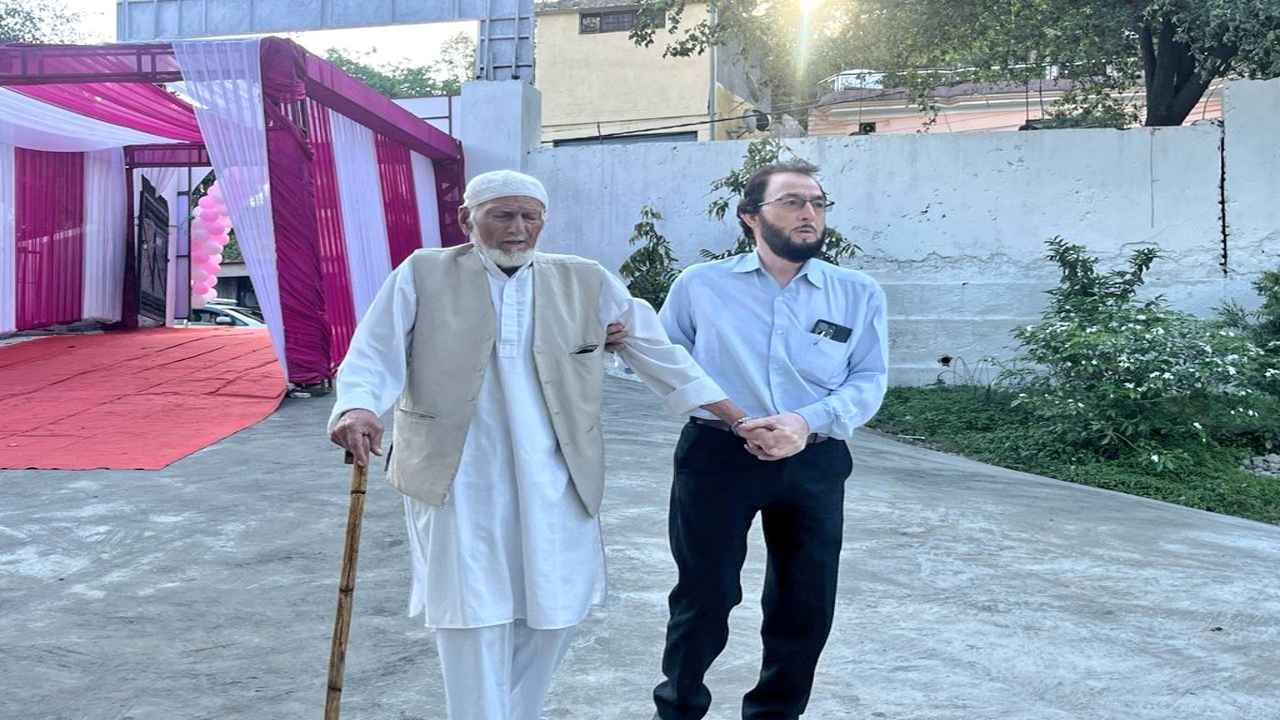
A 102-year-old man showed up at a Jammu polling place to cast his vote in the second phase of the Lok Sabha elections on Friday. Haji Karam Din arrived at the Reasi district polling place in the Jammu constituency with a walking stick in hand and a family member who assisted him with the pre-voting process.
Haji Karam Din, who is 102-year-old, showed his inked finger and posed for pictures outside the polling booth after casting his vote. He said voting at this polling place at this age makes him very happy. He has always cast his vote. Even at the age of 102, this experience is still ongoing, he said.
Reasi district is a part of the Jammu parliamentary constituency, and 22 candidates are up for vote with around 17.81 lakh eligible voters.
BJP’s sitting member Jugal Kishore Sharma is aiming for a third term in office following wins in the elections of 2014 and 2019. Former minister and Congress candidate Raman Bhalla is his main opponent.
Voting in the Jammu-Reasi Lok Sabha constituency began with eager voters showing up at the polling places. Some of them were wearing traditional Dogra attire.
In 2,416 polling places around the constituency, voting got underway at 7 a.m., and 10.39% of the total votes were cast by 9 a.m. In the 2019 Lok Sabha elections, Jammu recorded a 74% voter turnout.
Following the repeal of Article 370 and the division of the former state into two Union Territories five years ago, this is Jammu’s first significant election.
The Akhnoor segment received the highest percentage of votes, 14.24%, followed by Reasi (14.13%), Gulabgarh (13.53%), Shri Mata Vaishnodevi (12.71%), Marh (12.31%), Samba (8.56%), R S Pura Jammu South (8.17%), and Suchetgarh (5.67%), according to the officials. Ramgarh recorded the lowest voter participation of 1.53% so far.
Low attendance was observed in the border areas of the districts of Jammu and Samba till nine in the morning, according to poll data.
The officials said that big lines of voters were observed at several polling places throughout Jammu city. Voters were observed heading towards polling places early in the morning.
-
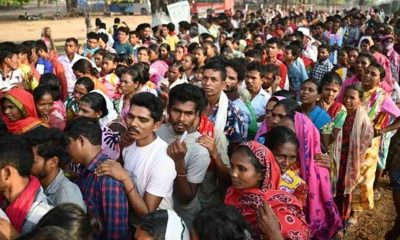
 2024 Lok Sabha Elections21 hours ago
2024 Lok Sabha Elections21 hours agoLok Sabha election 2024: Nearly 50% voter turnout recorded in second phase till 3 pm
-
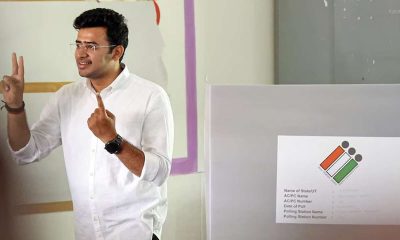
 2024 Lok Sabha Elections19 hours ago
2024 Lok Sabha Elections19 hours agoElection Commission books BJP MP Tejasvi Surya for seeking votes in the name of religion
-

 Cricket news2 hours ago
Cricket news2 hours agoIPL 2024: Punjab Kings beat Kolkata Knight Riders by 8 wickets to chase down highest T20 total
-

 2024 Lok Sabha Elections13 mins ago
2024 Lok Sabha Elections13 mins agoSmriti Irani takes a swipe at Rahul Gandhi for calling Amethi his home but contesting Lok Sabha elections from Wayanad

